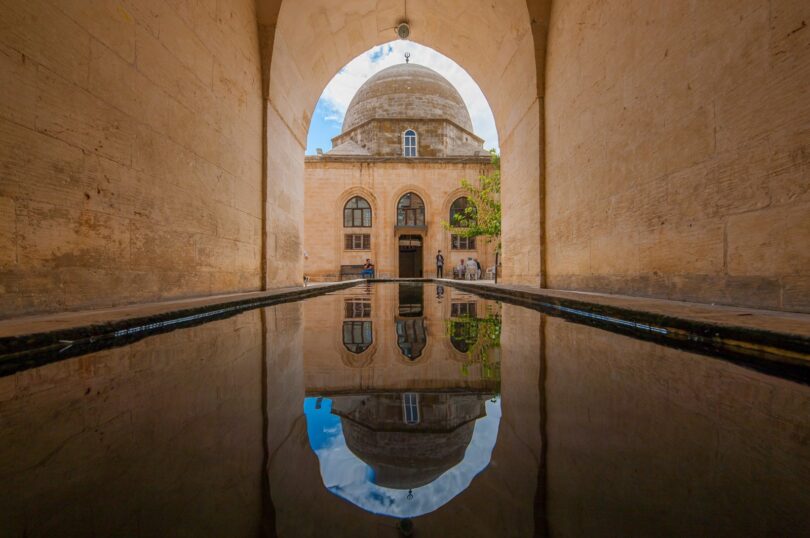Neslihan Koçak
Hittites, Assyrians, Persians, Romans and Turks and more, Mardin has had many visitors throughout history, each leaving its unique mark on the city’s culture, architecture, crafts and cuisine
Mardin, located in the Mesopotamian region, has hosted many civilizations throughout history and is a city that stands out with its cultural and historical background.
The history of Mardin goes back thousands of years and spans periods of Hittite, Assyrian, Persian, Roman and Byzantine, and Ottoman eras.
Even from its first settlers, the city was an important trade center at the eastern edge of Mesopotamian civilizations. Therefore, it remained an important strategic center for many periods.
During the Islamic period, Mardin survived from the Abbasid Caliphate to the present day. Under the rule of the Artuqid Dynasty in the 12th century, the city became an important cultural and commercial center. Mardin, which remained under the control of many civilizations such as Ayyubid, Seljuk, and Aq Qoyunlu, gained importance again in the 16th century when the Ottoman Empire entered.
Today, it is an important city for tourism in terms of historical texture and cultural expression. Mardin is famous for its historical texture and architecture. There are many old buildings and historical structures in the city.
Mardin’s old city center draws attention with its stone houses and narrow streets.
Mardin also has a rich cultural heritage. Since the city has an inclusive social structure where people from different religions live together, mosques, churches and synagogues are on its streets.
In addition, the food culture in the city is very interesting. Dishes unique to Mardin include stuffed ribs, steak tartar a la turca with minced meat, stuffed meatballs and stuffed zucchini flowers.
Mardin is a city waiting to be discovered with its historical and cultural riches, natural beauties and rich food culture.
Mardin is a city that still smells of history today. The town has many tourist attractions and that’s why many tourists visit yearly. Those visiting Mardin can discover the city’s history, delicious food, and culture.
The city offers you a unique experience to explore. Its historical structures, castles, mosques, churches, and old city texture attract attention. In addition, Mardin’s local handicrafts are also famous. From coppersmith to stonework, Mardin is known for its masters.

Copperwork is one of the most important handicrafts of Mardin. Coppersmiths and traditional businesses in Mardin make copper pots, trays, jugs and similar products. Along with its historical texture, Mardin also has a rich culture in the stonework.
The jewelry, figurines and handmade ornaments can be seen in Mardin markets. Meanwhile, the art of miniatures, paintings made in small sizes, carry a unique importance for the city as Mardin miniatures have a special place in Islamic art.
They are generally used as decorations in mosques and libraries.
Women specially weave hand-woven fabrics in Mardin. Usually decorated with colorful patterns and motifs, these fabrics are used as clothing and home textiles.
Now let’s take a look at some places to visit in Mardin.
Some of the most famous sights to see in the city includes the Mardin Castle, the history of which dates back 5,000 years and still stands today at the top of the town. There are structures such as mosques, monasteries and baths inside the castle.
Some other places to visit include Zinciriye Madrasa, built in 1385, which is one of Mardin’s most important historical buildings.
Inside the museum, there are exhibits of Islamic artifacts and handicraft collections. Mardin Museum, located in the city center, hosts many historical artifacts, manuscripts, coin collections and ethnographic artifacts.
Ulu Mosque, built in 1176, is a fine example of Seljuk architecture. The decorations and embroideries inside are quite different and remarkable. Dara Ancient City, located 30 kilometers (18.64 miles) south of Mardin, the ancient city is very important for its 3,500-year history.

The history of the temples, cisterns and churches inside is quite interesting.
Sakıp Sabancı City Museum, opened in 2011 to preserve the history of Mardin and promote tourism, introduces Mardin’s cultural, tourist and historical features.
While the Kasımiye Madrasah, built in the 14th century, is known as the largest madrasah in Mardin.
The classrooms and courtyard inside are pretty impressive.
The abbaras, or the stone houses that have continued to stand the test of time throughout the history of Mardin and have become the city’s symbol create a magnificent view, especially when illuminated at night.
Courtesy: Dailysabah







